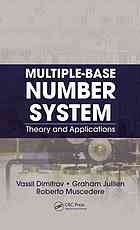

Most ebook files are in PDF format, so you can easily read them using various software such as Foxit Reader or directly on the Google Chrome browser.
Some ebook files are released by publishers in other formats such as .awz, .mobi, .epub, .fb2, etc. You may need to install specific software to read these formats on mobile/PC, such as Calibre.
Please read the tutorial at this link: https://ebookbell.com/faq
We offer FREE conversion to the popular formats you request; however, this may take some time. Therefore, right after payment, please email us, and we will try to provide the service as quickly as possible.
For some exceptional file formats or broken links (if any), please refrain from opening any disputes. Instead, email us first, and we will try to assist within a maximum of 6 hours.
EbookBell Team

4.4
62 reviews"FORWARD This is a book about a new number representation that has interesting properties for special applications. It is appropriately catalogued in the area of Computer Arithmetic, which, as the name suggests, is about arithmetic that is appropriate for implementing on calculating machines. These 'machines' have changed over the millennia that humans have been building aids to performing arithmetic calculations. At the present time, arithmetic processors are buried in the architectural structures of computer processors, built mostly out of silicon, with a minimum lateral component spacing of the order of a few tens of nanometers, and vertical spacing down to just a few atoms. Arithmetic is one of the fields that even young children know and learn about. Counting with the natural numbers ( ) leads to learning to add and multiply. Negative numbers and the concept of zero lead to expanding the natural numbers to the integers ( ), and learning about division leads to fractions and the rational numbers. When we perform arithmetic "long hand" we use a positional number representation with a radix of 10; undoubtedly developed from the fact that humans have a total of 10 digits on their two hands. Early mechanical, as well as some electronic digital computers, maintained the radix of 10, but the 2-state nature of digital logic gates and storage technology leads to a radix of 2 as being more natural for electronic machines. Binary number representations, which use a fixed radix of 2, are ubiquitous in the field of computer arithmetic, and there are many valuable text books that cover the special arithmetic hardware circuits and processing blocks that make use of binary representations"--